The Magic of Magnetism
“Look!” squeals three-year-old Eleanor. “I can pick up these two balls! It’s magic!”
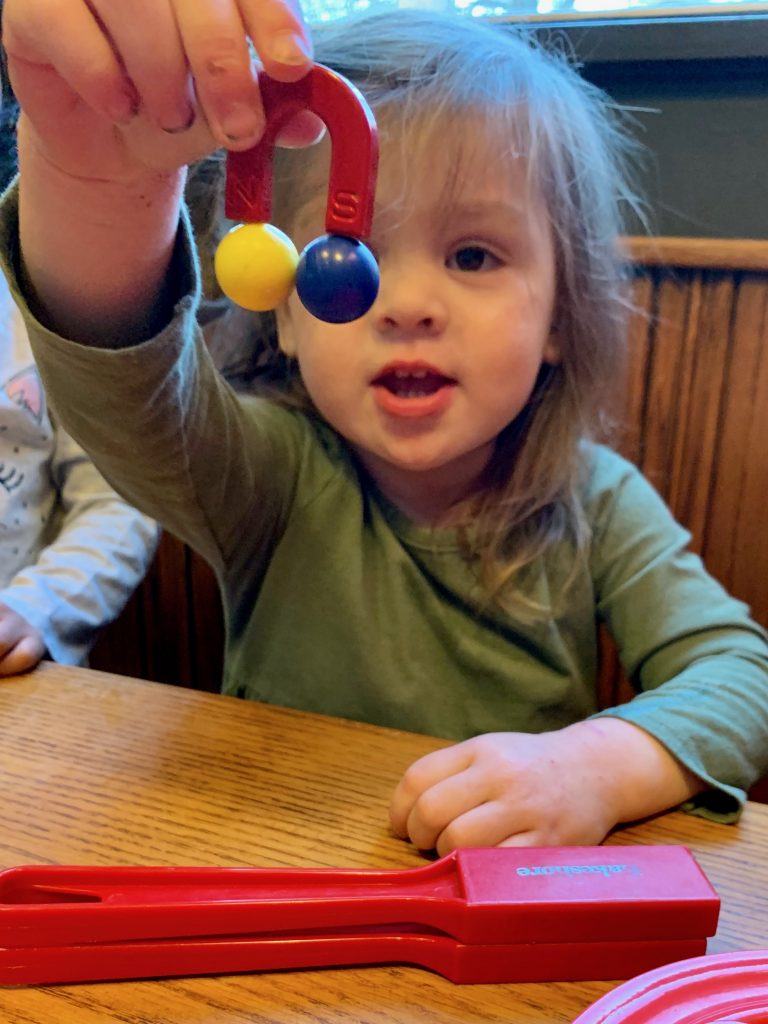
Have you ever seen young children playing with magnets? The “magical” properties of magnets never fail to captivate early learners and spark a play buzz!
Children learn by investigating, observing and figuring out how things work. Magnets fuel that curiosity in a way that is simple and accessible.
As they explore the properties of magnets through play, children develop a deeper understanding of scientific principles by asking questions such as “why” magnets stick together and “how” magnets work.
Magnetic play helps lay the foundation for further investigations as we guide the children through activities such as developing hypotheses and theories, solving problems and making predictions. By observing and studying cause and effect, our young STEM explorers can begin to develop a basic understanding of concepts such as magnetic attraction, magnet strength and magnetic forces and fields.
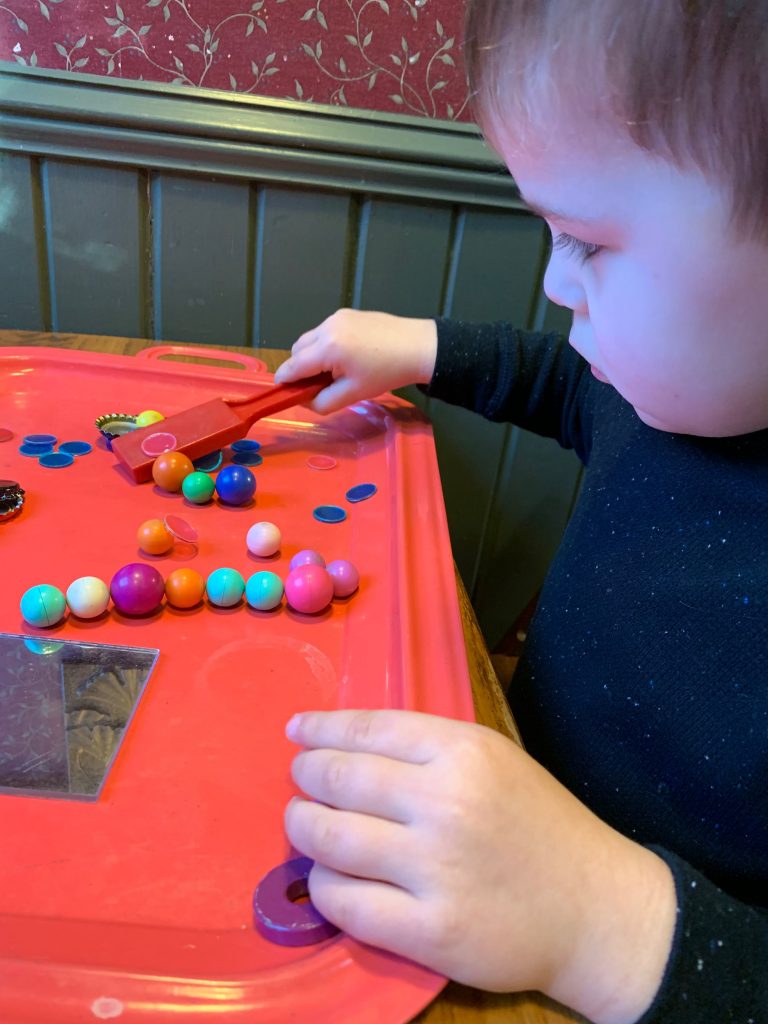
Playing with magnets is a great way to introduce STEM into a child’s life. If you need to record observations, this is a great time to take a seat and watch as children incorporate predictions and conclusions into the learning experience.

To set the stage for magnetic exploration, I put out a wooden tray filled with magnetic wands and magnets in a variety of shapes and sizes. Then I give each of the children an aluminum tray to define their play space and keep the magnetic balls from rolling off of the table onto the floor.
When children add magnets or remove them from the tray, they are learning about math concepts such as more, less, off and on. They’re also learning about patterns, shapes and sizes.
I also fill simple sensory bins with colored rice or coffee beans. Then I add magnetic and non-magnetic objects, as well as a magnetic wand for finding the “treasures.” I set two baskets nearby to encourage the children to sort their objects.
“Is this magnetic?” asks one child. “This should work,” says another. “It’s silver!”
Making a prediction means focusing on what we think will happen next based on our prior knowledge. It’s considered a guess if we have no prior knowledge. We can help children develop their prediction skills when we are playing with magnets, reading a story or finding our way home on a walk.

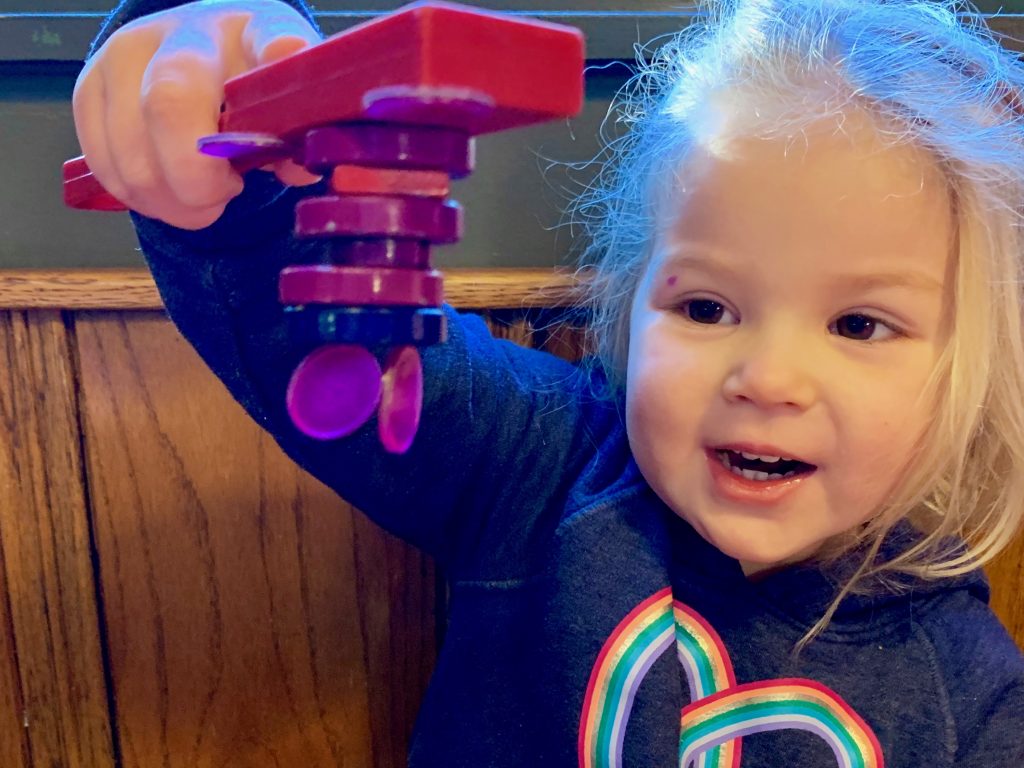
When the children at our early learning center play with magnetic wands and balls, they love to “catch” the balls on the wand and count how many they have. Sometimes I will see them intentionally create patterns.

Playing with magnets is a powerful math and science activity in early childhood classrooms because it fosters conversation and exploration and provides a fun and engaging incentive for children to make predictions and observe outcomes.
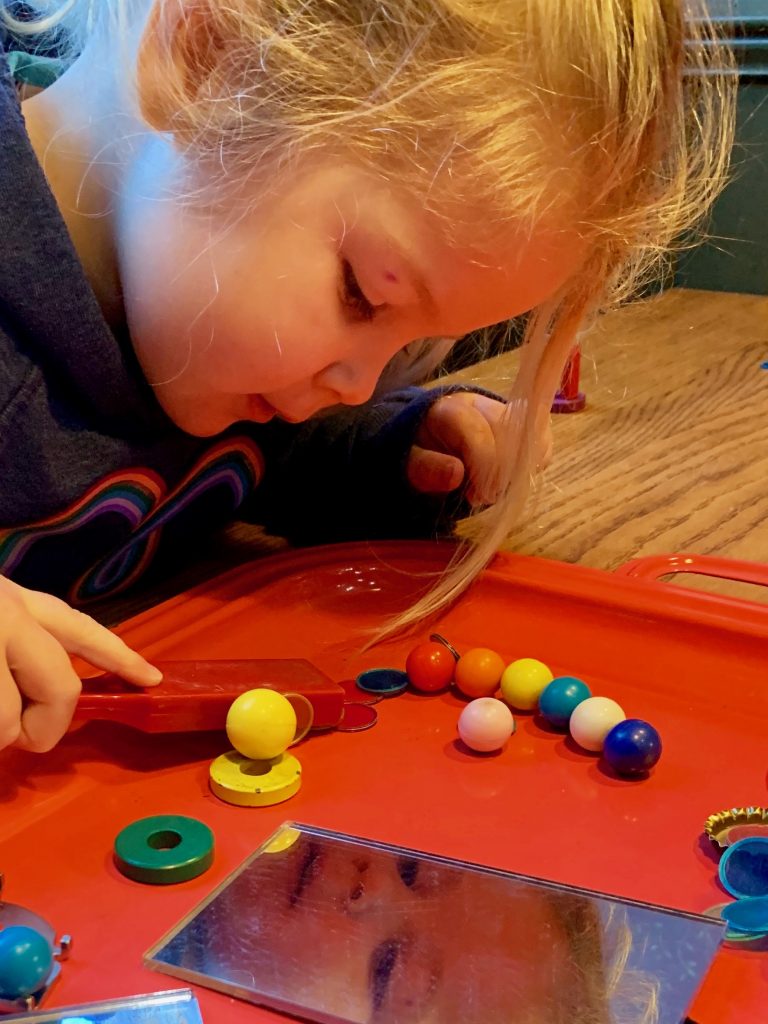
If you can, give the children a long period of time to investigate the magic of magnets and work through their theories. This extended time to conduct STEM investigations and learn through focused play is a gift that they may not be given in their future academic lives.
It will amaze you when you see the amount of time that children will spend exploring the magnets on their tray. It’s a calm, quiet and very, very focused activity that slows down even our most frenetic friends.
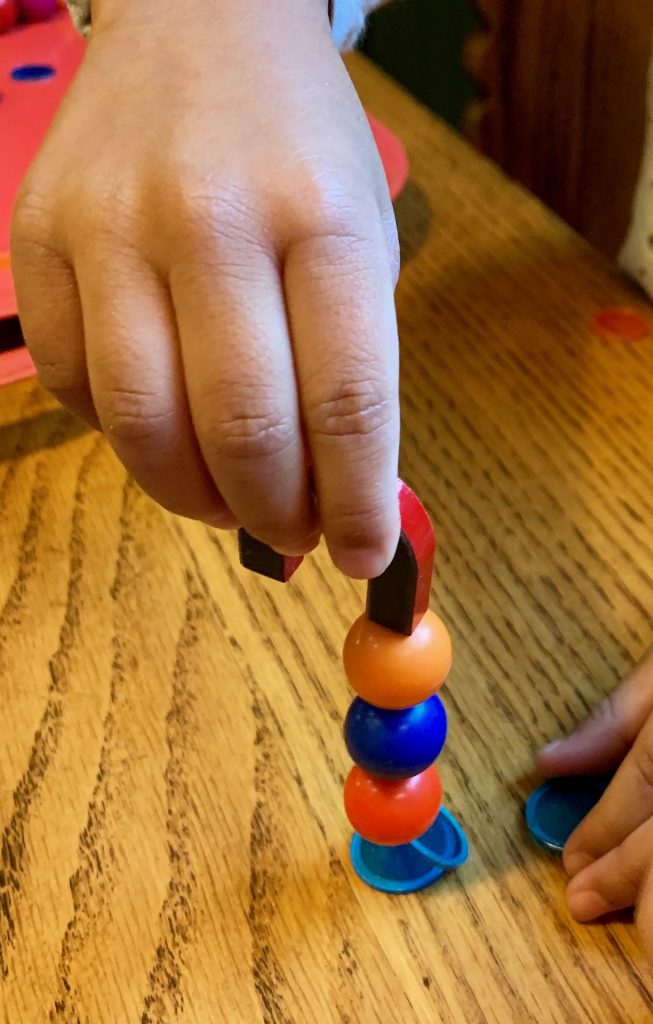
As we continue to play, we engage in a discussion about the forces that pull magnets together. We keep it pretty basic. This young group hasn’t shown any interest yet in the whys and the hows of magnetic forces and fields. They are too enchanted by the magic of it all. I have been down this trail before. When the brain is ready, the questions will be asked and we will have the resources available to answer their questions and push the experiments and investigations a wee bit further out of their comfort zone. There will be many more experiments for extended learning. But, for now, exploring the magic of magnetism suits us all just fine!
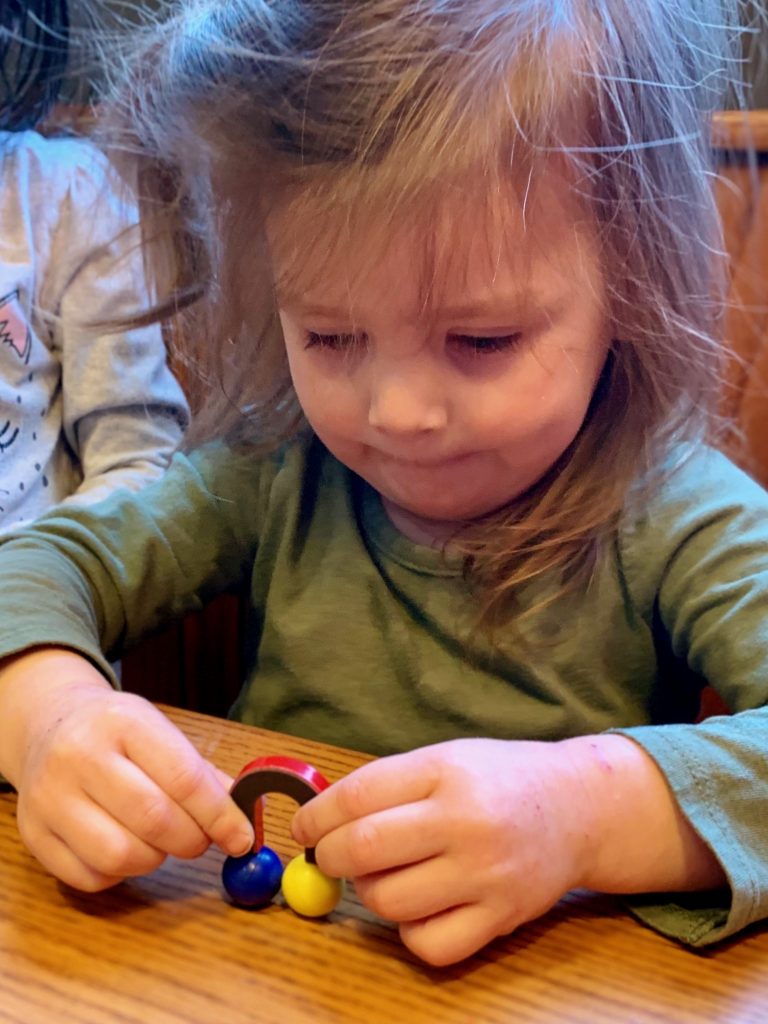
A few words of caution. Magnets are dangerous if ingested. We hope that our students no longer put everything in their mouths, but we can’t count on it. You know your students better than anyone. It is best to err on the side of caution and use large magnets that cannot possibly fit into a child’s mouth if you are at all concerned. It will make the day of magnetic play more enjoyable for YOU if you don’t have to worry.
Stay safe and take care!
LOVE THESE IDEAS! MY PRESCHOOLERS LOVE PLAYING WITH MAGNETS.
Great ideas. The kids are always fascinated by magnets. Thanks for the additional ideas and questions to help them explore even more.
I have large horseshoe magnets but that’s it for my young toddlers. These ideas will help us get other things and expand on magnets. I love using the sensory bins with them. But I do need to look for big enough items as things still go in some mouths from time to time.
Hi Sue,
This week our group has added the magna-tiles, and the Melissa and Doug refrigerator magnets (animal shapes) and a construction Dad, brought us some giant screws with flat ends. These have definitely upped our magnetic play! Maybe those would work for you? The magna-tiles are pretty fun for hanging off the wands and horseshoes! Good luck and thanks for reading! Diann
My students love exploring with the magnet wands to see what will stick as they say lol
I work with children ages five through 11. All the children love playing with the magnets. I do have the children try different things based on their ages. We do everything from what sticks and why to graphing. The children also love working on what floats and what doesn’t. Again we talk about the attibutes of the items being used and what they think will happen and why.
Children at my center love playing with the shape magnets and really engage in building towers, houses, cars, and 3D shapes. My own pre-schooler is very interested in magnets she really gets curious on what the magnet is attracted to so she goes around placing it on different items around the house and gets really excited when it is attracted to something.
I love using magnets in the classroom what an amazing tool to teach with. our kids love going through our room with different magnets to see what it will attach to then we discuss and ask questions
Great activity to do with preschool age children. They are learning about shapes and colors and ass well science. So many developmental areas working at the same time.
This is a great way to teach young children. Using the magnets, they are able to find random objects around the room to see if the magnet sticks. It helps when there are plenty of materials to choose from so that their imagination as well as their brain is stimilated.
There such great ideas here for teaching so many different things. Thank you for the great ideas.